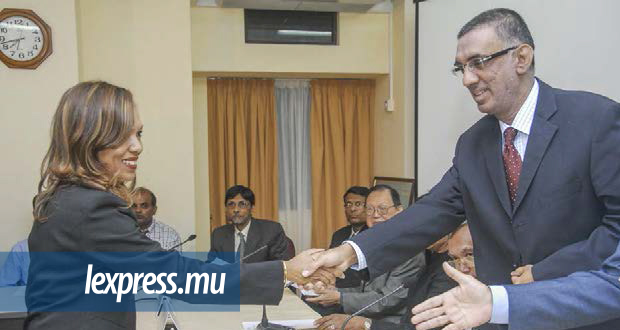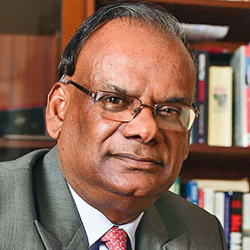Publicité
The bill on electoral reform
Par
Partager cet article
The bill on electoral reform

A significant regression on diversity, Inclusion and representation (ii)
In this part 2 of his article on the Constitution (Amendment) Bill, Rama Sithanen focuses on the appointment of six additional seats by political leaders on a “look at” basis. He studies the “calamitous consequences of this amendment”.
1. The repeal of an entrenched Constitutional safeguard on ‘fair and adequate representation’ to all sections of the population
Parliament must also look like the people it seeks to serve in a representative democracy. This is not only morally right but socially just, politically effective and is also the very foundation for stability, peaceful coexistence and prosperity in a deeply multi-ethnic country.
Clause 7 of the Bill repeals clause 5(1) to the First schedule that safeguards the right of each community to ‘fair and adequate representation’ based on a compensatory mechanism that corrects for the anomalies of the First Past The Post (FPTP) outcome in terms of the representation of the main sections of our rainbow nation. The crux of the matter lies in the absolute inefficacy and utter inadequacy of its replacement through the appointment of 6 additional seats by political leaders on a ‘look at’ basis. Such replacement of a Constitutional guarantee by a very crude provision will lead to less diversity, reduced representation and lower inclusion for many segments of the population.
2. The difference between actual and Constitutional ‘fair and adequate representation’
The Table below gives the share of seats of the two communities that have benefitted largely from the Constitutional guarantees entrenched in clause 5 (1) of the First Schedule for the 11 elections since 1967. It shows in a very forceful manner its impact on inclusion, diversity and representation.

Compared to a share of 30.7 % of the population, the General Population has obtained an average of 25.1 % of FPTP seats, indicating a representational deficit of 5.6 percentage points. The mechanism based on the Constitutional principle of ‘fair and adequate representation’ delivered around 75 % of the adjusted Best Loser (BL) seats to that community. It ended up with an overall percentage of 29.1 % of the 70 seats ( FPTP + BL seats). This could be considered BROADLY ‘fair and adequate’ as it would be difficult to attain a mirror representation. However to reach that share, that community must obtain around 6 BL seats. In some difficult elections such as 2005 and 1982, even the allocation of the BL seats leaves a high margin of underrepresentation. In 2005, its share of FPTP seats was very low at 20.97% and could not be raised further than 27.14% after the allotment of 6 BL seats. The gap was high at 3.57 percentage points. For the Muslim community, the share of FPTP seats stands at 13.93 % for the 11 elections since 1967, rising to 15.34 % with the allocation of around 2 BL seats on average. Again it is broadly representational to its 16.11 % of the population. However, in difficult years such as 1987 and 1976, when their shares of FPTP seats were too low at 9.67 % 11.29 %, even the distribution of BLS seats left a deficit in its representation.
3. The new formula will worsen that level of underrepresentation
The Bill abolishes the 8 Best Loser seats. It will be replaced by 6 additional seats to be appointed on a ‘look at basis’ by leaders to correct for any perceived community imbalance. Of course, all sections of our nation legitimately expect a commensurate increase in their representation as the number of seats rises from 70 to 81. The PR list to benefit from the 12 PR seats will be a balanced one, especially as it will be published before elections. There are at least 12 groups and sub groups that compete for elections and the party list will have to reflect such diversity both in numbers and ranks.
An algorithm is used to compute the several likely compositions and ranks of the PR list of major parties and the potential choice by leaders of the 6 additional seats based on expected underrepresentation. It indicates a significant underrepresentation of one section of our nation. Its FPTP share will marginally rise with one additional MP in Rodrigues but its overall representation will fall from the current 29.1% with the Best Loser seats to 27.8% with the proposals of Government, if all parties and political leaders play ball fairly. The predicament would be worse in elections such as in 2005 and 1982 when it would decline further to 24.7 % and 25.9 % of total seats. This is a huge democratic deficit for a 30.7 % population share. We need to be extremely careful on this highly sensitive and emotional issue of fair and adequate representation and inclusion.
On the same basis, a second group will see its share of Parliamentary representation decline from a current average of 15.3% to 14.4% on a population share of 16.1%. However, this average hides some outliers. In elections such as in 1987 and 1976, that group’s share would decline to a very low 11.1 % and 12.3 % of the 81 MPs. Simply because it is not adequately compensated by the new formula .
A third group that is already disadvantaged because of its arbitrary exclusion from the Best Loser system is also at risks of further underrepresentation. It is not constitutionally protected. However it obtained some undertaking of fair representation in the discussion leading to Independence. Similar to what is being proposed to others now. The group secured fair and adequate representation at the 1967 elections with five MPs. Since then, it has been a descent to hell in terms of inclusion and representation. In 2014, it obtained only 2.8% of seats with one of its only two MPs in a nail-biting third place with a margin of only 63 votes while its share of the population is significantly higher. The proposed system could accentuate its underrepresentation.
There is thus a very high risk of over 60% of the population being shortchanged in terms of parliamentary representation. This is simply unacceptable in a country where there is already a perception of underrepresentation.
4. An imperative need to mitigate such unjust underrepresentation
There is an absolute necessity for institutional mechanisms to avoid a further underrepresentation of some key sections of our rainbow nation. It is plain that some PR formulae have a better chance of achieving ‘fair and adequate’ representation’ than others. It is not an easy task as all communities would likely benefit from the PR seats while the current BL seats accrue primarily to two communities only! It very much depends on the construction and flexibility of the PR mode. Otherwise, the new formula will not and cannot replace the assurances given by the BL system and will amplify the underrepresentation of many groups.
5. An adaptation of the Singapore model
Singapore’s population make up is around 76% Chinese, 15% Malays, 7% Indians and 2% others, including Eurasians. At Independence, it had inherited the FPTP with single member constituencies from the British. It was almost impossible for any non-Chinese to be returned in those single member constituencies. It had to tweak its FPTP system in 1988 to provide representation for minority communities. It introduced 15 Group Representation Constituencies with 3 to 6 members per constituency and provided for a balanced slate of candidates to be fielded. However, there is only one vote to elect the team of candidates. That would be equivalent to having one vote to choose a team of three candidates in each of our 21 FPTP constituencies. One can immediately see the merit of such a system for inclusion and diversity. The likes of Henry, Wong and Chetty would have been elected in 2014 and Sayyed Hossen and Chaumiere in 2005. However, it deprives voters of a key element in a democracy, which is the choice to elect the three candidates individually and not collectively. It would be a very heavy price to pay in terms of restricting voters’ choice.
6. Confecting an alternative from what exists elsewhere
The other alternative is to produce an innovate set based on some practices that exist in some countries.
i) First, political parties must assume their responsibility by having an equitable sociodemographic mix of candidates in the 20 constituencies so that the slate is a diverse one in terms of ‘fair and adequate representation’ of all the colours of the rainbow. This can be achieved through the choice of candidates in each constituency, a national balance among the 60 candidates and the composition and rank of the party lists ;
ii) Second, many countries with mixed electoral systems allow for double candidacies where some candidates are fielded in FPTP constituencies and are also included on the party list. The basis for such flexibility is so obvious in our electoral system. It acts as an alternative to the BLS by giving a second chance to some candidates. Without double candidacies, Wong, Henry, Lepoigneur and Quirin would not have been MPs in the new system. It is an absolute condition to mitigate further underrepresentation of at least three sections of our nation. Otherwise, it would be a disaster for many groups;
iii) Third, we should allow for two candidates to be placed on the same rank on the PR list on an either/ or basis so as to give a fillip to diversity and inclusion, especially those who have benefitted from the Best Loser system. We could allow for a limited number of ‘same-ranked’ candidates on the party list. This will make a huge difference in the sequence of PR MPs appointed;
iv) Fourth, while no democratic country provides for party leaders to appoint Mps after an election, there are many that allow the Prime Minister to choose Ministers from outside the Parliamentary caucus to ensure, amongst others, diversity and inclusion. France frequently uses this mechanism. Rachida Dati, Harlem Desir and Laura Flessel are cases in point. The system has the double advantage of diversity and inclusion while picking talent and expertise for some posts. Already, the Attorney-General and the Speaker in Mauritius may be appointed from outside Parliament. Our Best Loser system also allows unsuccessful candidates to be returned to Parliament and to become Minister.
While we do not have to follow France or Kenya, one compromise would be to give the flexibility to the Prime Minister for the appointment of a limited number of Ministers from civil society, NGO and other individuals based on their merit, expertise and experience in their specific fields. And to use this mechanism to also provide for fair and adequate representation whenever deemed necessary.
7. Concluding Remarks
In its wisdom the Sachs Commission of 2002 cautioned that any reform should fully evaluate ‘what would the likely social and political impact of the innovation be on the unity of the diverse Mauritian nation and on access of all to public political activity?’
An informed evaluation shows that the Bill constitutes a significant regression on diversity, inclusion and representation. Unless we review some of the very harmful clauses.
Publicité
Publicité
Les plus récents






